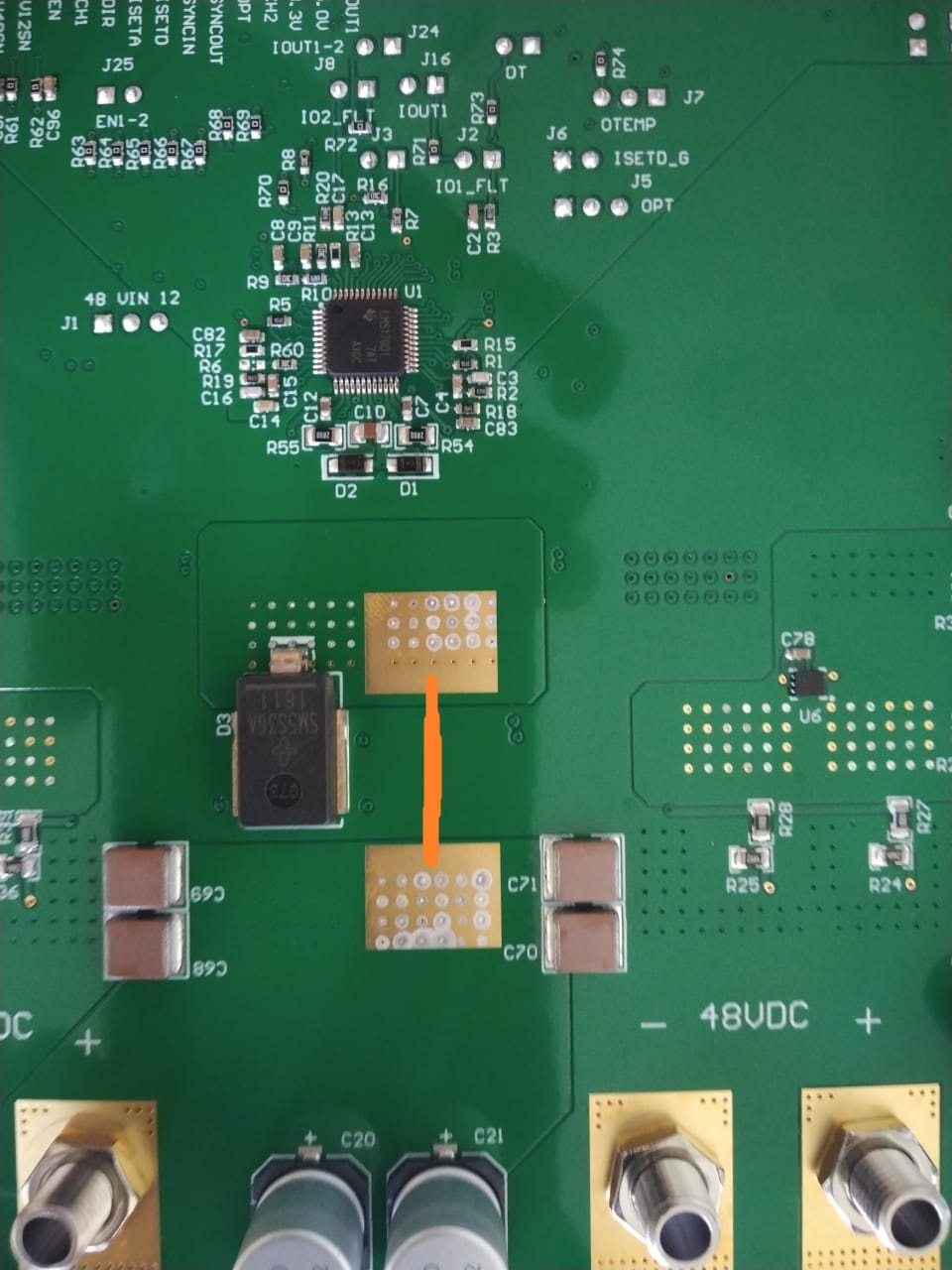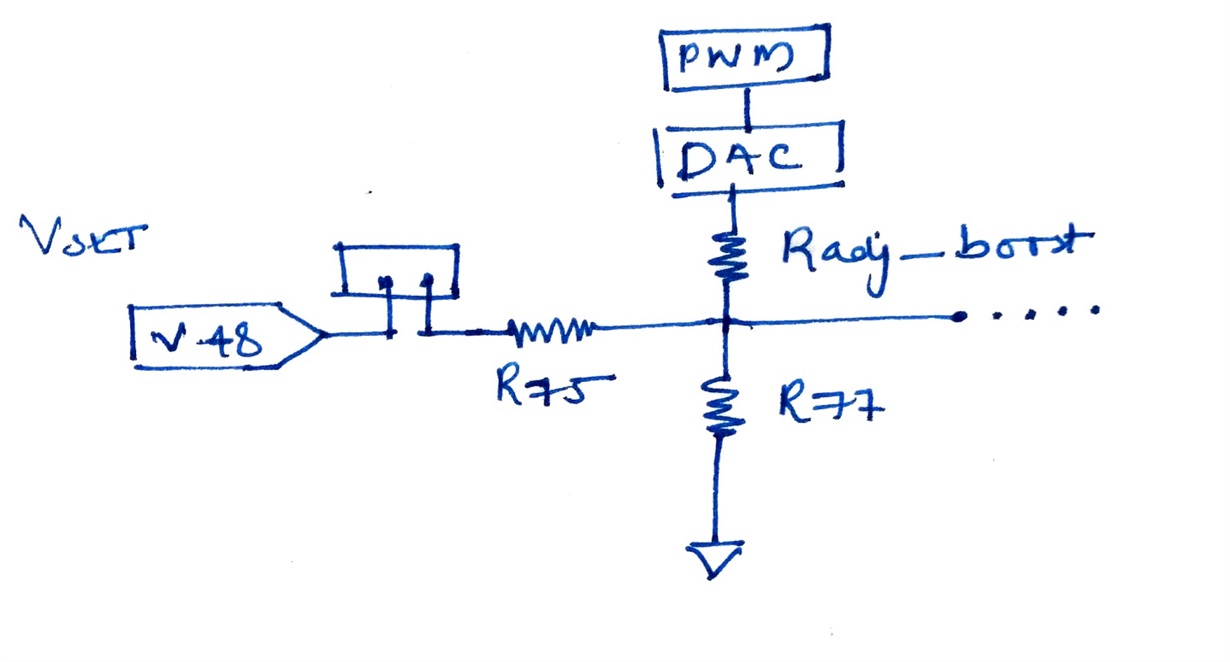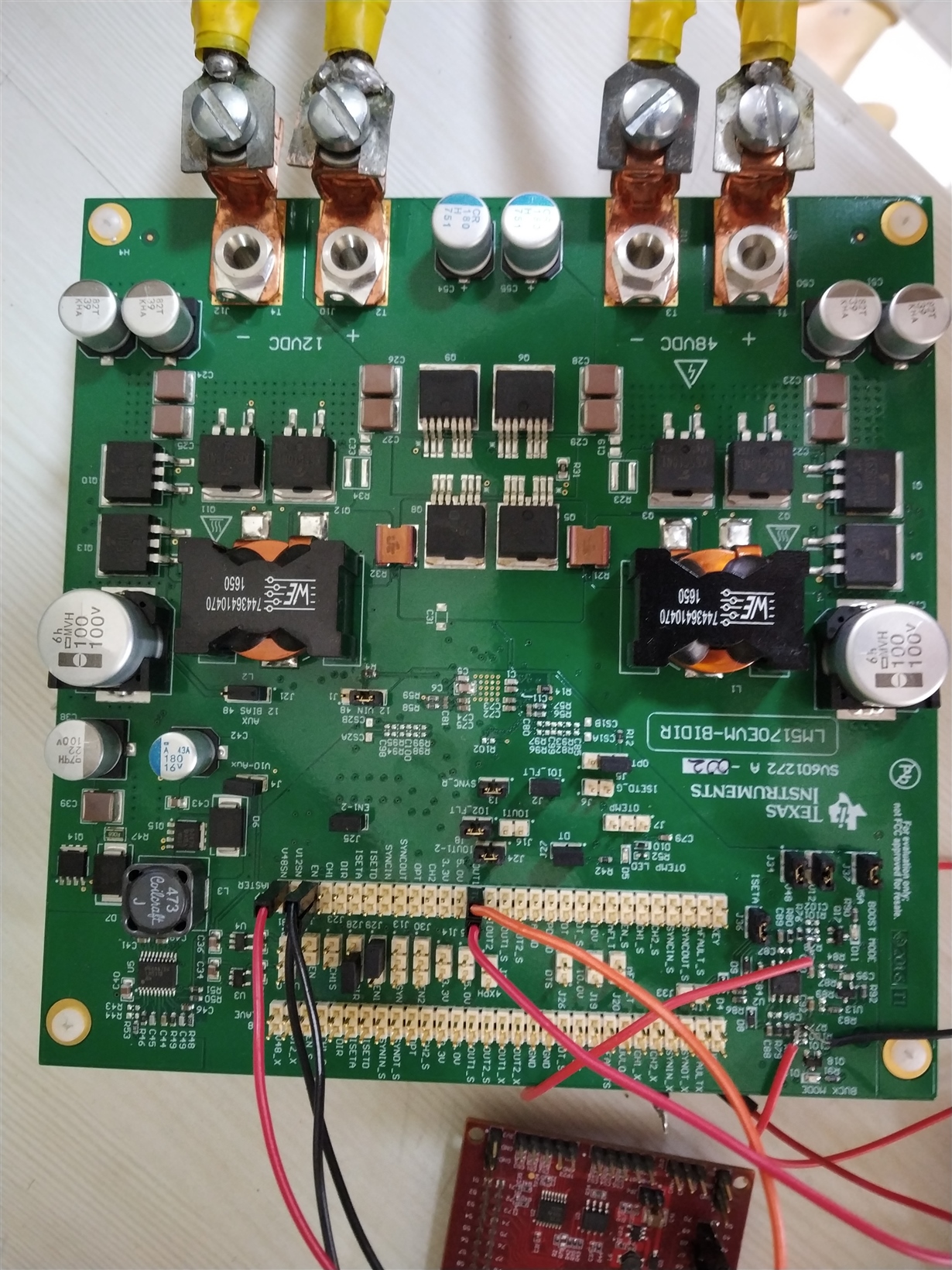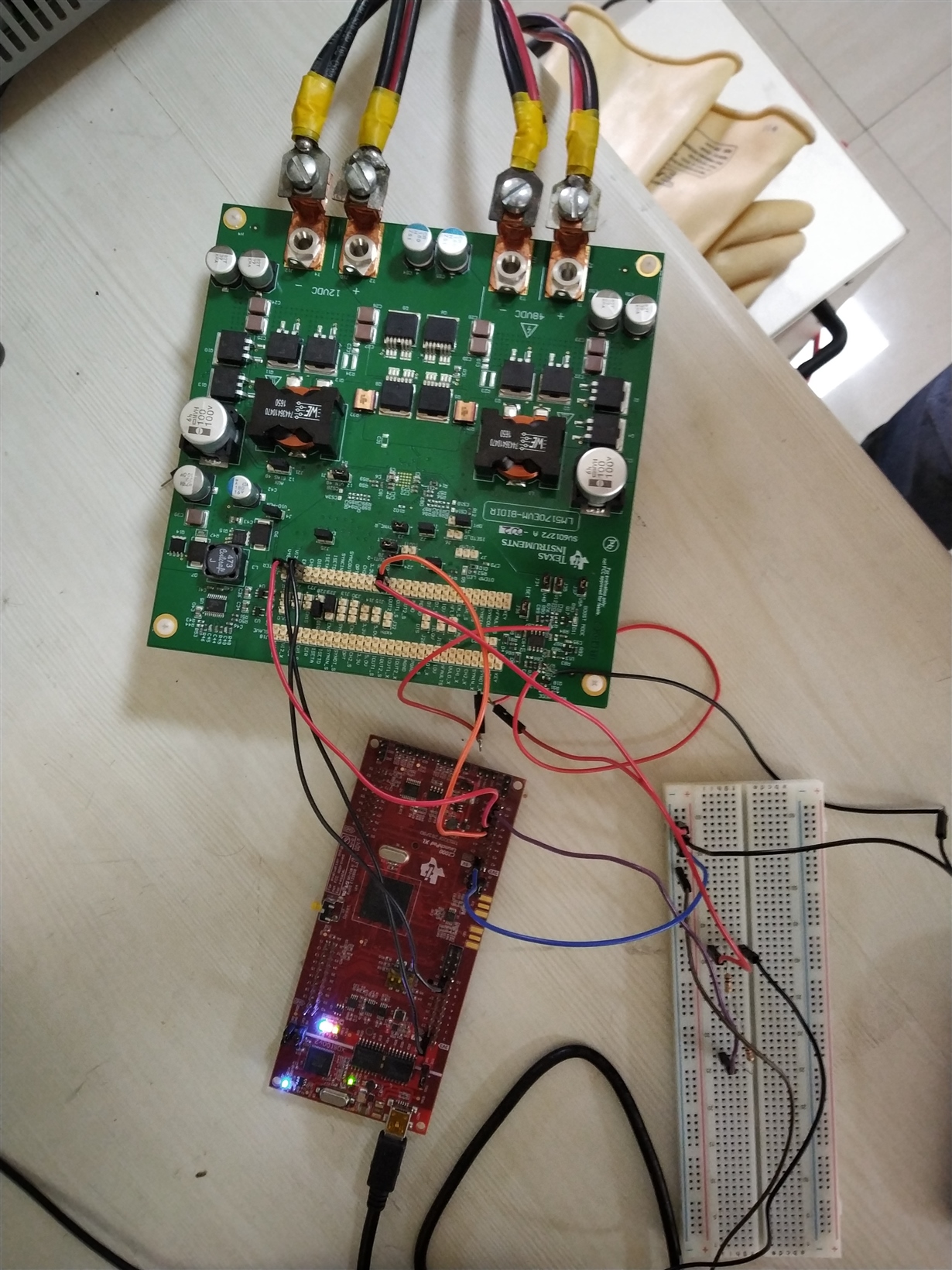Other Parts Discussed in Thread: LM5170, LM5170-Q1
Hi,
I am trying to test the EVM module for normal boost operation. In the test procedure, it is written that HV-PS is required for start-up in boost mode, if not MOSFET breaker should be shorted. How to short? I have seen another similar thread where copper foil must be used to short.
Whether I should solder as shown in the above image?









